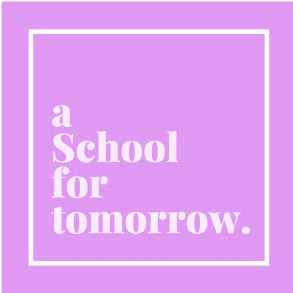The Way | Work | The Character Work
The Character Of Character
The character of character does not fit easily in one neat place in a simple diagram – believe us, we have tried!
Stakeholders in schools worldwide typically see character as a multi-layered idea. It encompasses characteristics and idiosyncrasies, resilience and robustness, and the capacity to model and lead through virtues and qualities. People know what it is when they see it, but often when you ask them to define it, they tend to reveal to you perhaps one or just a few of the pieces of the puzzle.
Character appears before us on many different levels in education. It can be an all-embracing rationale, as well as an inherent design feature and a particular field of practice, just as much as it is a holistic lens through which we might observe and evaluate what we do. It’s prominent in much of the formal documentation that appears on school walls, in mottoes and brochures. Often there is scant detail about the “How?” and the “What?” that sits behind the “Why?” There is almost no measurement used to justify assertions that a school adds character to its students.
Let's bring some clarity to the definitions surrounding the character of character.

Character is the way we live life. Do we belong? Are we fulfilling our potential? Are we doing what is good and right? These are powerful questions we ask about our civic, performance and moral character. Sometimes, we search deep to answer them and discover an inner sense of who we are and who we may become; this is our mark as a person. Other times, we try to fulfil the expectations of others; this is our measure as a person. And so, through the course of our lives, as we express the civic character of belonging, the performance character of fulfilling potential and the moral character of doing what is good and right, we wrestle. We wrestle with both leaving a mark and measuring up. This is how we form character. This is how we show who we have been and who we are becoming.
Civic character is best measured through a threshold test of behaviour informed by the key question: "Do I belong?" It focuses our attention on the fundamentals of what every person should and should not do concerning their obligations to society. Typically, this begins with meeting minimum standards and expectations characterised by respect, civility and consideration for others and extends into a much more meaningful question of belonging. Critical understanding required to answer this question will involve a clear comparison of the behaviours of a student in identified criteria relative to the norms expected of all citizens. Teachers should be prepared to justify the rationale and usage of such norms. Many schools perform with great confidence in this area. Nevertheless, challenges emerge when the more straightforward threshold test used correctly to assess civic character is applied to other types of character requiring more nuanced assessment modes. In addition, some issues can emerge when schools weigh up the relative impact of cumulative minor adverse incidents in the area of civic character as opposed to significant transgressions.
Performance character helps us see the growth in a person in the execution of those fundamental qualities that relate to purpose, persistence, and reflection and reveals how well they function in society's roles. They should assess the extent of their performance by describing drive, growth and the progressive attainment of goals in terms of both process and product informed by the key question: "Am I reaching my potential?" Critical understanding required to answer this question will be based upon evidence and analysis of a student's formative and summative performance relative to baseline performance in agreed goals areas. Most theories of education now will encourage this reflection to occur within concepts as a growth mindset and a positive or strength-based approach. It is not surprising that performance character and the mode used most commonly to assess it features strongly in school co-curricular activity, mainly sport. Many students will point to the critical role that character learning in sport and co-curricular activity plays in their lives. Perhaps the tangible nature of the measurement of performance goals that allows students to test themselves against themselves and their peers allows them a much more immediate understanding of their short-term and long-term accomplishments. However, there is clear evidence that students learn just as well and feel good about their performance when applied in an academic context.
Moral character is a much more complex field that asks us to consider the extent to which a person aspires to live a good life informed by a personal code that is most usually characterised by courage, integrity and humility. We can track moral development by a person's commitment to personal and community expectations for values, ethics and purpose. Judgment can be applied individually and collectively by interrogating the quality and consistency of their actions and impact on the world around them according to the key question: "Am I doing what is good and right in my life?"
We need to be careful of forming inappropriate judgments in this area. It is perhaps most appropriate to encourage students to reflect and make judgments about the integrity of their values, intentions, actions, and impact based on a moral code that they have, to the best of their ability, formed. The challenge in doing this is that we inevitably run up against differing views as to appropriate social codes and perspectives on the role of the school in encouraging and even enforcing them. Schools do this all the time, however, even if they feel uncomfortable in doing so. Some schools move with less confidence in moral character, even though what they do underpins their understanding of what constitutes both civic virtue and high performance. For those schools and their staff that do not feel ready to address moral character directly, we have learned to encourage schools to pursue an education that focuses (in the first instance) on civic and performance character. We find that if teachers get these right in the first instance, then the work of educating for moral character more naturally emerges for consideration, discussion and implementation.
Growing In Competency
A competency is the capacity to demonstrate how one has grown in character. It deliberately and simultaneously asks one to know, to do, to be, and to learn. When competency is achieved, the knowledge, skills, dispositions, and learning habits cultivated during the social and educational processes we experience are demonstrated in our values, actions, and outcomes. In short, civic, performance and moral character is revealed in how our students learn, live, lead, and work.
The competency they gain in answering the question “Who am I?” is the competency to learn. Learning well helps students to become stronger in all facets of their lives. Learning helps them to apply these strengths to realising an evolving and increasingly selfless reason for doing what they do. Learning, therefore, is about the quest towards self-awareness through acquiring the knowledge skills, dispositions and habits connected with values and beliefs, personal development, and academic development that foster a sense of “My Purpose” through the curiosity and wisdom to meet the expectation to "Know yourself”.
This competency gained in answering the question “Where do I fit in?” is the competency to live. Living well helps students understand and respect themselves and others, and the language, customs, honourable traditions, rituals, and values of the people and places from which they have come and where they are going. Living, therefore, is the search for relationship through acquiring the knowledge, skills, dispositions and habits associated with family and friends, home life and finance, and relational development that help them to appreciate “My People” and “My Place” with the humility and gratitude to meet the expectation to "Earn your place".
The competency gained from answering the question “How can I best serve others?” is the competency to lead. Leading well begins with who you are, flows into who you want to become and is demonstrated through deliberate, targeted, and intentional action that aligns vision with intention and means to influence, motivate, direct, and inspire others to create a preferred future for all. Leading, therefore, is about acquiring the knowledge, skills, dispositions and habits of service and volunteering, formal leadership, and leadership development that challenge students to locate “My Practice” within the courage and compassion needed to meet the expectation to "Go on a journey from me to you to us".
The competency gained from answering the question “Whose am I?” is the competency to work. Working well is about building around you a supportive network of people for and with whom your sense of belonging, the achievement of your potential, and the propensity to that which is good and right in your life might find a meaningful home. Working, therefore, is about the discovery of character and commitment through acquiring the knowledge, skills, dispositions and habits of planning, social purpose, and career development that help students to connect “My Purpose”, “My People”, “My Place” and “My Practice” through the vocation and diligence to meet the expectation to "Find your calling".
As students’ journeys of exploration, encounter and discovery continue, they will grow in each of these competencies to learn, live, lead, and work. They will make progress (on occasion) and achieve some success. Improvement is likely to be incremental and will rarely move in a straight line. To know that they’ve improved, students need to gather evidence about where they started to understand where they have arrived on their journey. In this way, they’ll need to take the opportunity to measure and warrant their contributions in a way that allows them to demonstrate and claim their purpose as the most compelling reason for their story. They won’t have to measure everything at once, but it will help if they think through how they are growing in character and wellness and competency on their learning journeys.
Schools of character demonstrate a shared vision and vocabulary for their preferred future, an agreed value proposition for what the school delivers, and change whose velocity, shape, and trajectory have all been designed and implemented to attenuate the demands and pressures of the school’s external and internal contexts.
The Pathway To Excellence
The journey of learning towards character for each of us needs to connect us to the essential questions that we all have and point us towards a way to find answers. The power of this inquiry to help us all live better lives, to help us feel as though we are making a difference in the world, and help us know that we are getting somewhere must be sourced in the message we use to talk about it. It must be so significant, rich, and perhaps even disruptive of our frames of mind that it compels us to sit up and take notice. It must force us to want to do something about it. It must make us commit to finding our way on The Pathway To Excellence.
Therefore, the Pathway To Excellence is about growing in the character and competencies we need to thrive in our world. It is also about how we build the adaptive expertise and self-efficacy to experience success – progress and wellness on our journeys of exploration, encounter and discovery.
Adaptive expertise means growing in character and competencies and using these to solve known and new problems. It is, in essence, our commitment to growth. Self-efficacy means how we organise our competencies to learn, live, lead and work in a way that optimises growth in character and achievement of excellent outcomes so that we can thrive in our world. It is our capacity to be the best version of ourselves that we can be.
Success means progress and wellness on our pathways to excellence. Progress is defined by the growth, motivation, engagement, achievement, and qualification of a person in each of their competencies. These concepts are connected intimately with each other; inherent in this connectedness is the measurement of a person’s progress according to growth in mastery of competencies, organisation of one’s life around these competencies, and a sense of thriving in the world through these competencies. Wellness is how we experience health and happiness in the world. Our wellness (or how well we feel) is influenced by our health – physical, psychological, emotional, and spiritual, our satisfaction with the lives we are leading, and the sense of purpose and connectedness we have. Our character is directly affected by our wellness; how well we are is so very important to how we live our lives and who we are becoming through all of our social relationships and educational experiences on our pathways to excellence.
To grow on The Pathway To Excellence, students don’t need to be perfect or even exceptional. They need to be committed to growth and to being the best version of themselves that they can be. They need to know what they are learning – that’s aspiration. They need to go on a journey of exploration, encounter, and discovery – that’s experience. They need to discover their own identity and how best to express it through their learning and relationships – that’s voice. They need to become clear on what matters to them and collaborate with teachers, mentors and experts in how they bring value to others within the narratives of their learning journeys – that’s agency and advocacy. Finally, learners need to be provided with the time, support, and conditions that will help them make the most of their learning to make progress and achieve success in terms of character, competency, wellness, and graduate outcomes – that’s resource.
If all things are as they ought to be, other strengths will come to the fore in how we learn, live, lead and work. This will allow them to both leave their mark and to measure up in terms of their sense of belonging, the fulfilment of their potential, and the propensity to do that which is good and right. And they will also have passed on what they have found along the way to others.
The Character of a School for tomorrow.
Our schools and places of education all have a role to play in this journey towards character that we call The Pathway to Excellence. The Way is a research-driven and evidence-based approach to building a future-fit school that helps students grow in the character and competencies of learning, living, leading, and work they need to thrive in our world. To this end, the leaders of our educational institutions need to be Game Changers, those brave pioneers whose innovative ideas are shaping the landscape of future-fit schooling. They don’t wait for permission. They are courageous enough through their leadership to make real change in their learning communities as they foster the growth of each young person in their care and equip them with the necessary character, confidence, and competencies to flourish in a new world environment. This is why a School for tomorrow. exists. We want to promote the qualities of adaptive expertise and self-efficacy required to develop the character and competencies to thrive in this world and experience progress and wellness on our pathways to excellence.
Character education is the articulation and application of a school's whole program of education to build capacity in character competency through the development of rigour in character practice, expertise in character apprenticeship, depth in character leadership, and richness in character capital across the contexts, design and experiences of character learning. Stakeholders in schools want to see the culture of their schools aligned with the principles that sit behind this understanding of future-fit character and competency. With this emerging future-fit perspective in mind, we need to view character education not simply as a discreet activity that exists in a specific place and time – it is the whole work of a school.
Character practice refers to the community of character practice that tests and validates the teaching and learning of character. It is associated with the theory of pedagogy in which we see character education as being directed by deliberate values-rich teaching and learning that requires testing and validation through a community of inquiry and practice in character education.
Character apprenticeship refers to the learning relationships through which individuals move from being novices to experts in character competency and then, in turn, help others develop their mastery of character. It is associated mainly with the theory of relationships, which states that character education is nurtured by connections between individuals and groups most powerful when formed through a formative process of character apprenticeship.
Character leadership refers to the specific character labour exercised by leaders in modelling character, developing character competency, and reinforcing character education through the signal matters and incidents of daily life that constitute a school's cultural groove. Character labour refers to the deeds, words and decisions that reveal a leader's true character and promote the character labour of others and the character capital of the school as a whole. Character education efficacy results from the will and the capacity of leaders to embed a shared commitment to 'what we want, why we want it and how we do it' in character education. Character leadership is associated with the theory of culture in which character education is seen to be explicitly reinforced by character leadership that attends to honourable traditions, rituals, artefacts, narratives, norms, and models.
Character capital refers to the quantum of character in a community and its relevant expressions in education, practice, apprenticeship, and leadership for this character. It is associated with the theory of everywhere, which views character education as occurring in multiple sites that develop character capital across the whole school. Character capital relates mainly to the value of the feelings and perceptions held by the school and broader communities about the character purpose and character strengths of a school. Families want to support and to be involved with schools whose values and character they respect. This, in turn, creates brand value, reputation and goodwill and results in loyalty, lifetime relationships and referrals.
In this way, character capital externalises the shared purpose of relationships. It also internalises the alignment of hearts and heads. The value of families' character commitments is held in the hearts of the people within a school. It can be seen in the energy and enthusiasm that people bring to support and act upon the values and character strengths of the school. Every relationship that a school has with everyone it touches is an asset and an investment. To build character wealth, leaders must treat their people like investors because that is what they are – intellectual, emotional and character investors. Every day, they bring their heads and hearts to their character work with students. If they do not do this work imaginatively and with commitment, outcomes for character education will be diminished.
Character capital also builds personal value in terms of the level of positive, focused energy about character and character education that leaders invest in at work and in their personal life. Leaders may inspire or demoralise others first by how effectively they manage their own character presence and secondly by how well they mobilise, focus and renew the collective character energy of the people they lead.
Schools with strong reserves of character capital demonstrate a shared vision and vocabulary for their preferred future, an agreed value proposition for what the school delivers, and change whose velocity, shape, and trajectory have all been designed and implemented to attenuate the demands and pressures of the school's external and internal contexts. They deliver an excellent character education founded on future-fit graduate outcomes, associated qualities, and critical competencies, and their expression in an aligned curriculum will shape their educational philosophies, programs, and activities in the years ahead.
They see their capacity growing along pathways or corridors defined by these outcomes, qualities and competencies, the stages of which are measured according to an organisational maturity model that assesses the journey of a school towards becoming a school of character. This maturity model tracks, in particular, the character of the school's climate and culture, the leadership of its educational program, the effectiveness of its teachers, the student educational experience and outcomes that help them to become 'whole people', the alignment of operations with strategy, and the state of teacher professionalism within a community of practice. These can be assessed along a continuum that moves from individual practice to strategic awareness to strategic intent to strategic judgment to strategic coherence to fit for purpose competency.
The character of character is ultimately best defined by the ethos of a community. We believe that a school community's values, ethos, and associated cultures are essential for its sense of identity and drive the development of its maturity as a school of character. The strategy by which a school selects and works towards its preferred future is likewise critical in helping it be the best version of itself that it can become. Evidence of learning within a community of inquiry and practice is also an essential component of a successful school.
We believe that character is the whole work of a school. Nothing is more critical to a school's understanding of its purpose than its conception of the character of character and expression of this through its preferred graduate outcomes. This includes the definition of character, the behaviours through which this is demonstrated, and how we measure the growth, development, progress, and success of competencies – the knowledge, skills, dispositions, and learning habits of students. When character education drives the attainment of the desired graduate outcomes of a school with quality and consistency across all aspects of the curriculum, co-curriculum, and extra-curriculum, we might reasonably consider it to be a School for tomorrow.






